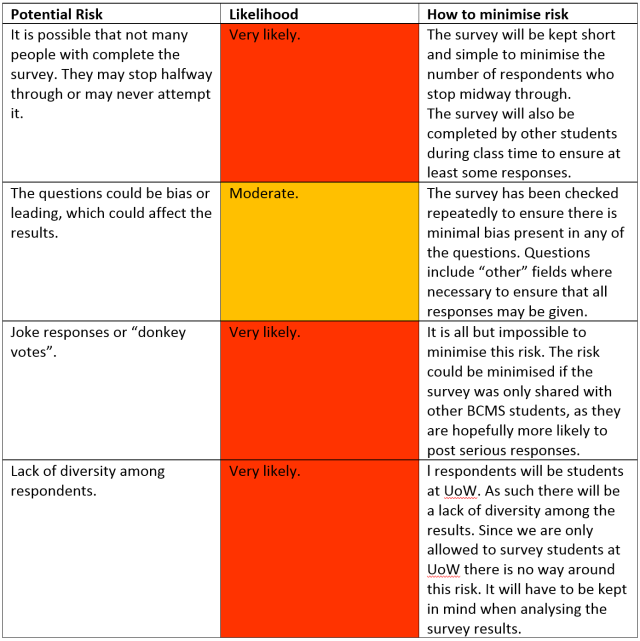Introduction
This research project aims to determine how widespread the use of ad blockers is in Australia, particularly among young adults, or those aged between 18 and 29. It also hopes to determine the reasons that members of this demographic use an ad blocker and if usage is more popular among males or females. After reading the annual Ad Blocking Report released by Adobe and PageFair which focused mostly on ad blocker usage in the United States of America and Europe, I was curious about the usage of ad blockers in Australia.
It is unlikely that we will be able to get a full picture of how widespread ad blocker usage is across all of Australia due to this project’s expectedly small response size, however it is possible that there will be enough responses to give us an idea of how many individuals at the University of Wollongong use ad blockers.
When creating my survey, I used several resources to ensure the questions were as clear, not misleading, unbiased, and as respectful as possible. The Harvard University Program on Survey Research assisted me in deciding which questions I would include and how to word them, How to Write Good Survey Questions from quickanddirtytips.com helped me decide on the structure the survey would have. It was also important to be aware of my own potential bias as an ad blocker user when writing the survey and I will need to keep this in mind again when interpreting the results.
Justification
Ad blocking extensions have been steadily growing in popularity. Eyeo GmbH’s “AdBlock Plus” is currently the most downloaded browser extension of all time with over 300 million downloads, and BetaFish’s similarly named “AdBlock” boasts over 200 million downloads. According to the annual Ad Blocking Reports published by Adobe and PageFair ad blocker usage is highest among younger users, particularly those from 18 to 29 years old.
As ad blocking usage has been steadily increasing and reportedly costs advertisers USD21.8bn in 2015 (page 7), and since the above-mentioned reports focused mostly on the United States and Europe, I felt that further research that is focussed on Australia could potentially benefit advertisers in some way and also sate my curiosity.
Survey – Ad Blocking and You
This survey is being conducted as part of a research project for BCM210 – Research Practices in Media and Communication, a compulsory subject for BCMS students at the University of Wollongong, Australia. Its aim is to find how widespread the use of ad blockers is, and the reasons that individuals use them.
Participation in this survey is completely voluntary and the responses given will be kept confidential. Individuals are under no obligation to complete the survey and may exit and any time. By completing this survey you consent to your answers being used as part of a research project.
The results of this survey will be published on Mathew Robinson’s blog. If you have any questions related to the survey you may contact Mathew Robinson there or via Twitter.
This survey will take approximately 2 minutes to complete.
- What is your age?
- 18 to 24
- 25 to 34
- 35 to 44
- 45 to 54
- 55 to 64
- 65 to 74
- 75 or older
- What is your gender?
- Female
- Male
- Other
- Do you currently use an ad blocker
- Yes
- No
- Why do you use an ad blocker?
If you answered “No” to Question 3, what could make you begin using an ad blocker? Leave blank if you would never consider using an ad blocker.
- Misuse of personal data to personalise advertisements.
- Security concerns.
- Noticed an increase in the number of advertisements encountered.
- To block disruptive or intrusive advertisements.
- Other (please specify)
Timeline
The timeline below shows the expected timeline from now to the end of the research project. “Timelines are important in evaluating the feasibility of your project. Inexperienced researchers tend to underestimate the amount of time that the various stages of research will take.” Due to this, the timeline for this project is generous is some places to give time to adjust and adapt for any unexpected changes or obstacles that come up.

Risks
